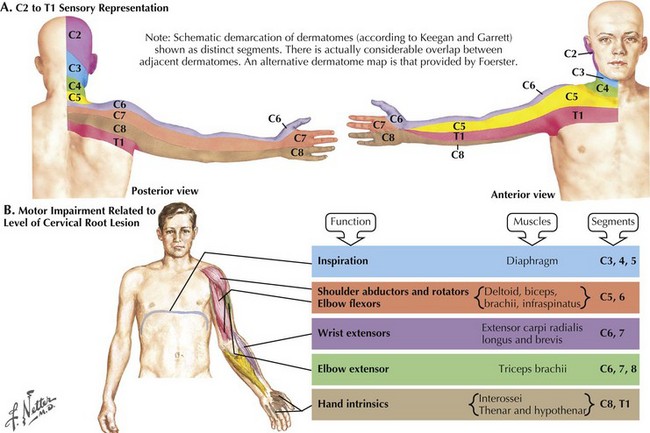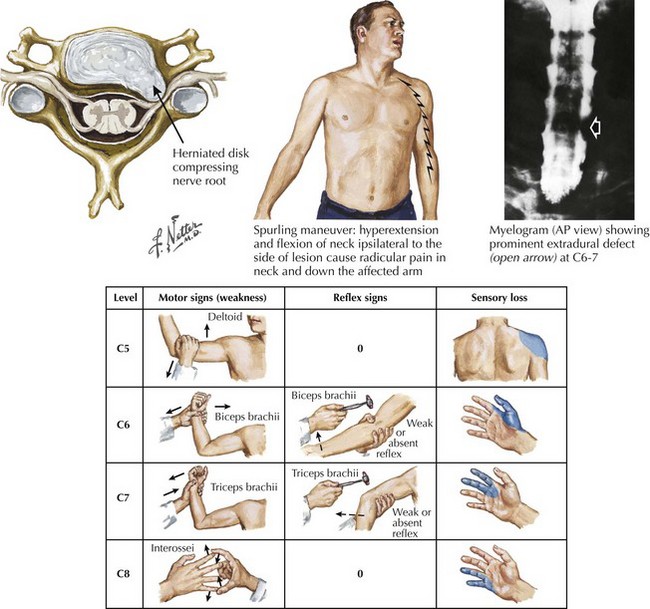61 Cervical Radiculopathy
Clinical Presentation
The clinical presentations of cervical radiculopathy depend on the specific root involved. It is unusual to have multiple nerve roots compressed at one time. The usual symptoms are pain, motor weakness, and sensory disturbance. Neck and/or medial scapular pain commonly occur with cervical root compression; shoulder or arm pains are often present. Typical clinical findings include both arm weakness and sensory disturbance appropriate to the affected nerve root (Fig. 61-1). Neck movement often exacerbates the radicular pain and may result in an electric shock–like sensation (Fig. 61-2). Very rarely, pressure on the spinal cord as well as the nerve root may result in concomitant evidence of myelopathy. In any patient with cervical radiculopathy, clinical examination requires careful evaluation for evidence of a myelopathy by making certain the neurologic examination does not demonstrate a spastic gait with enhanced muscle stretch reflexes, a Babinski sign, and evidence of a spinal cord sensory level.
Of the various cervical radiculopathies, C7 nerve root is the most commonly affected. It exits the spinal canal between C6 and C7. Typically, compression leads to pain in the posterior arm. Unlike C5 and C6 lesions, C7 has little functional overlap with other roots. C7 innervates the triceps muscle, which extends the elbow (see Fig. 61-2). Unless patients perform activities that demand extension of the elbow, such as hammering for a carpenter, serving in tennis, rowing, or performing pushups, many individuals with a C7 radiculopathy are unaware of significant triceps weakness. In order to best ascertain the presence of triceps weakness, the examiner must ask the patient to flex the arm at the elbow to 90 degrees and then have the patient try to extend against resistance. In contrast, if one first asks the patient to extend his arm fully, relatively subtle degrees of weakness will be missed. In repose, gravity extends the elbow in most cases. Sensory loss in C7 radiculopathy usually extends to the index and middle fingers (Table 61-1).
Stay updated, free articles. Join our Telegram channel

Full access? Get Clinical Tree











